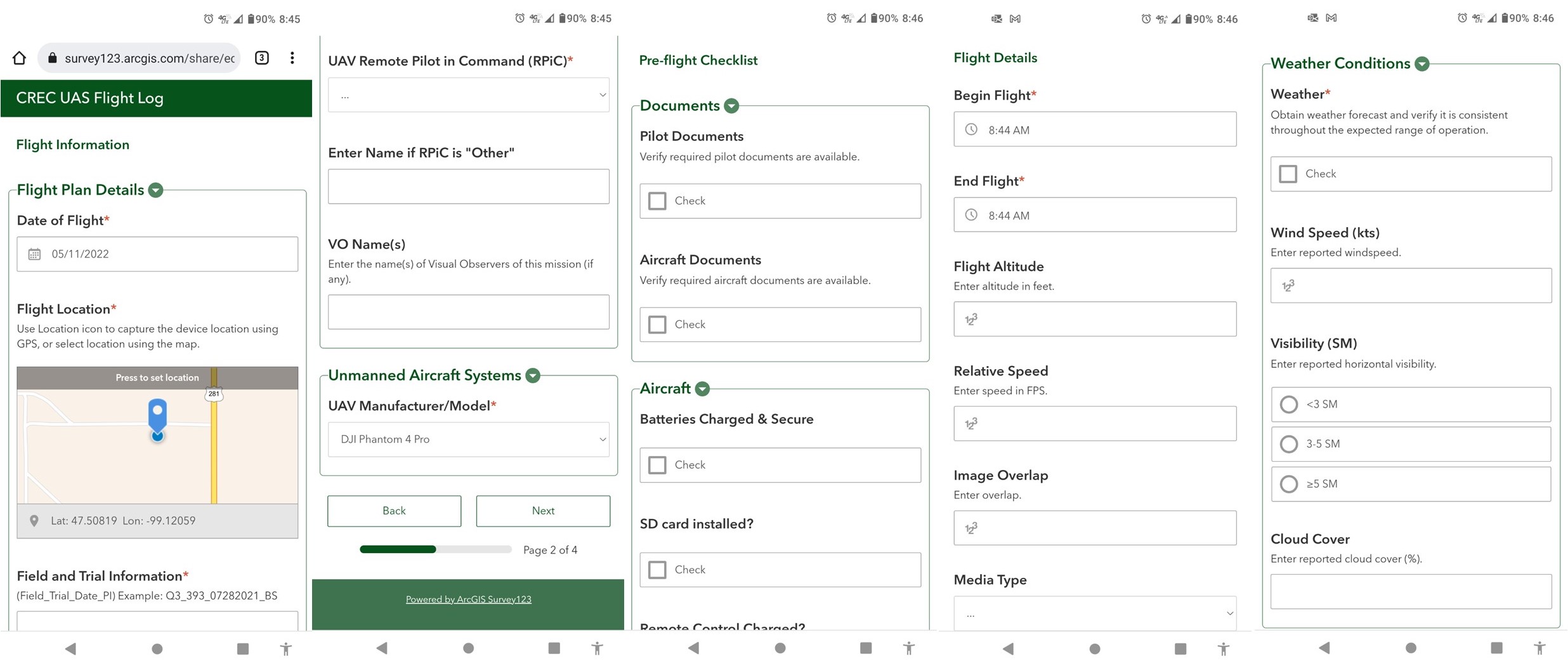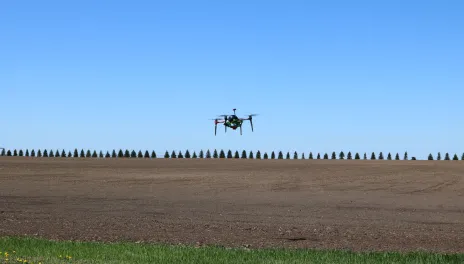It’s Fly Time to Start Thinking About Drones
As we navigate our transition from winter into spring (and eventually into summer), it’s time to start thinking about readying our drones and our paperwork for a season of flights, surveys, and data collection. To that end, here are a few considerations to be aware of prior to getting into the field.
For those that have their Federal Aviation Administration (FAA) Commercial Operators License (Part 107), insure that your licensing is up-to-date and on-hand.
Mission logging is of critical importance to maintaining flight records and should be available should the FAA inquire. While it is perfectly acceptable to use a notebook, online tools provide a fast and reliable way to document each mission. One free package that is easy to use is EPICollect5. Another package is Survey123, which has a UAS Log application already developed (Figure 1). The most important information that you need to collect pertains to flight times (start/end), weather conditions, location, and drone condition. A reliable site for UAS weather forecasts is https://www.uavforecast.com/.

After deciding how to log your missions, familiarize yourself with the airspace and regulations pertaining to the area you wish to fly. If you intend to operate in controlled airspace, you will require approval prior to flight. Did you check to see if any NOTAMs (Notice to Airmen) have been issued in your area? The best resource for information pertaining to NOTAMs is the FAA NOTAM site at: https://notams.aim.faa.gov/notamSearch/nsapp.html#/
In addition to maintaining logs of each mission and familiarizing yourself with the airspace in which you will be operating, it is a good idea to check your UAS airframe and props, UAS batteries, and UAS remote control. Check the airframe and props to insure the integrity of each component. Make sure that the airframe isn’t compromised and that the props are not chipped or in any way compromised. Specifically, it is recommended that props are replaced after 300-500 hours of use, or any time they are chipped or damaged. When checking batteries, make sure that they will take and hold a charge and that there is no damage to the battery, or bulging of the battery itself. If there is, discard the battery properly.
In short, now that we are approaching the field season you need to make sure that your FAA paperwork is up-to-date, that your mission logging plans are in place, that your drone and its components are working sufficiently, and that you have checked weather and airspace in the areas you will be flying. As always, if you have questions or concerns you can reach out, or check the FAA websites. It’s fly time we start getting the drones prepped!
NDSU Extension does not endorse commercial products or companies even though reference may be made to trade names, trademarks or service names.
David Kramar, Ph. D.
David.Kramar@ndsu.edu
Precision Agriculture Specialist

